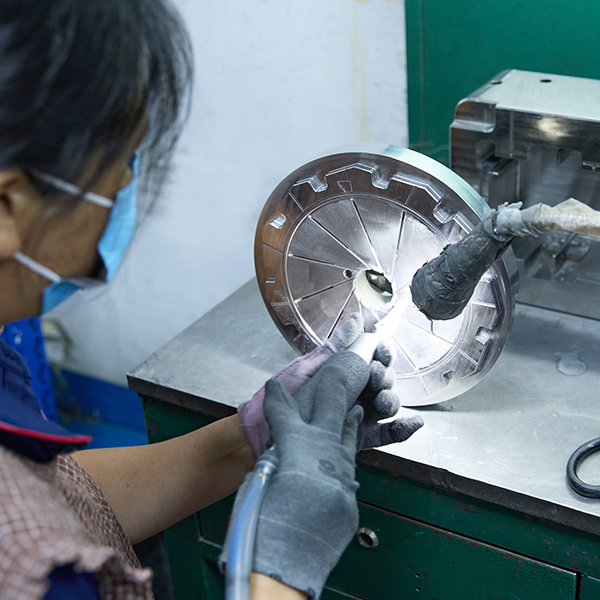The Multifaceted Role of a Tool Maker in Modern Manufacturing
Defining the Tool Maker's Craft
A tool maker (or tooling maker) serves as the linchpin of precision manufacturing, bridging design intent with tangible production tools. Operating within a tool shop, these skilled professionals specialize in mold components fabrication and tooling maintenance, ensuring every component meets exacting standards. From reading complex blueprints to optimizing production workflows, their expertise is indispensable for creating mold maker-grade tools that drive industrial efficiency.

Core Responsibilities of a Tool Maker
1. Engineering Documentation Mastery
Tool makers translate technical specifications into actionable plans:
Interpreting CAD Drawings: Analyze 2D/3D models (e.g., SolidWorks, AutoCAD) to extract dimensions, tolerances (±0.01mm), and surface finish requirements for mold components fabrication.
Material Specification Analysis: Identify optimal materials for tools—ranging from H13 tool steel for high-volume molds to aluminum for rapid prototyping jigs.
Process Planning: Develop step-by-step machining sequences for tooling maker tasks, balancing efficiency with precision.
2. Precision Machining Expertise
Using diverse equipment, tool makers shape materials with industrial accuracy:
Conventional Machining:
Lathes: Turn cylindrical components (e.g., mold cores) with diametrical tolerances of ±0.005mm.
Milling Machines: Create complex cavities via 3-axis/5-axis setups for mold maker projects.
CNC Operation:
Post-Processing:
3. Metrology and Quality Control
Tool makers ensure components meet strict standards:
4. Jig, Fixture, and Template Fabrication
Tool makers enhance production efficiency through custom tooling:
Jig Design: Create fixtures for repeatable part positioning in CNC machining, reducing setup times by 50% in tool shop environments.
Template Fabrication: Machine precision guides for manual assembly processes, ensuring consistency in low-volume mold maker runs.
Specialized Tools: Fabricate custom cutting tools (e.g., form tools, broaches) for unique geometries not achievable with standard equipment.
5. Tool and Die Maintenance
Sustaining tooling performance is central to a tool maker’s role:
Preventive Maintenance:
Perform scheduled inspections of molds/dies, replacing worn components (ejector pins, guide bushes) to maintain part quality.
Rebuild cavities and cores via welding (TIG/MIG) and re-machining, extending tool life by 30–50%.
Corrective Repairs:
6. Cross-Functional Collaboration
Tool makers act as technical liaisons:
7. Safety and Compliance Adherence
Upholding operational standards is non-negotiable:
Skills and Expertise Required
Technical Proficiency: Mastery of manual/CNC machines, metrology tools, and CAD/CAM software (e.g., Mastercam, Fusion 360).
Problem-Solving: Ability to resolve machining errors or tooling failures creatively, critical for mold components fabrication challenges.
Attention to Detail: Capability to work within micrometer-level tolerances, a hallmark of elite tool maker professionals.
Material Knowledge: Understanding of metalurgy (heat treatment, alloy properties) and plastic behavior in mold applications.
The Tool Maker in Industry 4.0
Modern tool makers integrate emerging technologies:
Digital Tools: Use IoT sensors to monitor tool wear in real-time, scheduling maintenance proactively in tool shop settings.
Additive Manufacturing: 3D print jigs/fixtures or mold inserts (via SLM), reducing lead times for custom tooling maker projects.
AI-Powered Software: Leverage machine learning to optimize CNC toolpaths for efficiency and precision in mold components fabrication.
Conclusion: The Unsung Architects of Manufacturing
As tool makers and tooling makers shape the tools that shape our world, their role in mold components fabrication and mold maker excellence cannot be overstated. Whether operating within a bustling tool shop or collaborating on cutting-edge designs, their precision, expertise, and commitment to quality drive innovation across industries—from automotive to medical devices. In an era of automation, the human touch of a skilled tool maker remains irreplaceable, ensuring that every mold, jig, and component meets the highest standards of craftsmanship and functionality.


